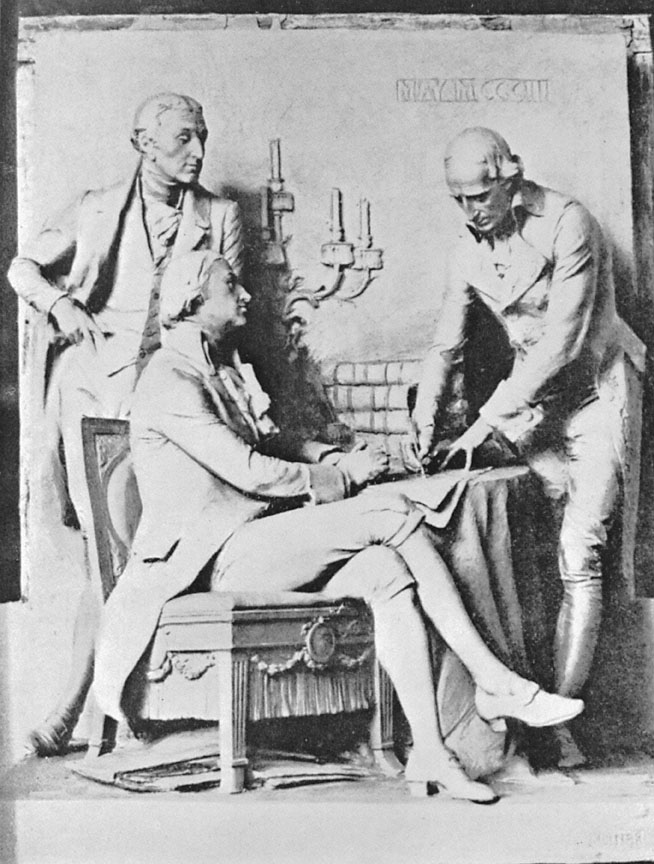- Catalog No. —
- OrHi 104961
- Date —
- 1803
- Era —
- None
- Themes —
- Exploration and Explorers, Government, Law, and Politics
- Credits —
- Oregon Historical Society
- Regions —
- None
- Author —
- Unknown
Treaty for the Louisiana Purchase
This image depicts James Monroe, Francois de Barbé-Marbois, and Robert Livingston signing the treaty for the purchase of Louisiana at Paris in 1803. It is taken from Joseph Gaston’s 1912 Centennial History of Oregon.
During the 1780s and 1790s, settlers from the newly established United States began moving in ever increasing numbers into the Mississippi and Ohio river valleys. They faced a major geographic problem, however. The Americans needed access to the primary transportation conduit of the region, the Mississippi River, if their economy was to develop to its fullest potential.
A 1795 treaty between the United States and Spain recognized the American right to utilize the Mississippi for commercial purposes, but many Americans were aggravated by what they considered to be excessive Spanish regulation and taxation. Although France was the first European power to settle the Louisiana Territory, a vaguely defined region roughly encompassing the Mississippi River Basin, they had ceded the area to the Spanish Empire in 1762. It was under Spain’s rule that New Orleans, the gateway to the Mississippi, rose to dominance. By 1800, the city exercised an unrivaled degree of control over the Mississippi trade.
American rhetoric became increasingly heated around 1800 as they debated what to do about the “Mississippi Question,” particularly after it became known that Spain had secretly ceded Louisiana back to France in 1802. President Thomas Jefferson declared that any foreign nation that possessed New Orleans was the United States’ “natural and habitual enemy,” and in 1803, the U.S. Senate authorized the president to arm 80,000 militiamen to take the city by force if necessary.
Partly to head off this seemingly inevitable conflict, Jefferson sent an ambassador, Robert Livingston, to France to see if Napoleon would be willing to sell part of the Louisiana Territory. To the Americans’ surprise, the French emperor’s negotiators offered to sell all of the massive territory for $15 million, a bargain even in those days. Knowing Jefferson’s mind, Livingston and special envoy James Monroe eagerly accepted the offer. Jefferson found out about the deal on July 3, 1803, and the next day it was announced to the public. The territorial claims of the United States immediately doubled in size, though it would take decades of warfare with various Native groups before much of the region was finally brought under American control.
Further Reading:
Meinig, D.W. The Shaping of America: A Geographical Perspective on 500 Years of History. Vol. 2: Continental America, 1800-1867. New Haven, Conn, 1993.
Rodriguez, Junius P., ed. The Louisiana Purchase: A Historical and Geographical Encyclopedia. Santa Barbara, Calif., 2002.
Written by Cain Allen, © Oregon Historical Society, 2004.
